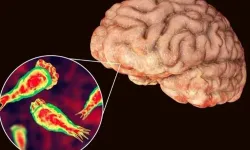"For example, consider a 40-year-old male patient who smokes. This patient also has diabetes and hypertension. According to this table, the probability of this patient dying from cardiovascular disease in the next ten years is around 4 percent. Let's also consider another patient who is a 60-year-old non-smoker.
This patient also has neither hypertension nor diabetes. According to the table, this patient has a 4 percent chance of dying from cardiovascular disease in the next ten years. In other words, the cardiovascular risk age of the 40-year-old patient has become equal to that of the 60-year-old patient; in short, the 40-year-old patient's arteries are 60 years old. The main causes of this vascular aging are smoking, hypertension and diabetes."
Among these risk factors, age, gender and genetic predisposition are risk factors that cannot be changed. However, hypertension, diabetes, smoking and high cholesterol are risk factors that can be eliminated with medication and lifestyle changes. Looking at the table, smoking cessation reduces cardiovascular risk by about half. Reducing the value of large blood pressure from 160 mmHg to around 120 also reduces the risk by about half. Likewise, it is clear from the graph that reducing the total cholesterol value from 300 mg/dL to below 200 reduces cardiovascular risk by 2-3 points.
Therefore, the elimination of these risk factors also reduces the age at cardiovascular risk, in other words, it has a fashionable term for anti-aging. Patients and health professionals should make a joint effort to get rid of these risk factors. Quitting smoking, together with medication if necessary, seems to be the first step in the process of delaying vascular aging. Normal blood pressure in a healthy person should be below 140/90 mmHg. In other words, large blood pressure should not be 140 and above and small blood pressure should not be 90 and above. Blood pressure above these values significantly increases the risk of stroke and heart attack. Treatment of hypertension can be summarized as a salt-free diet, regular physical exercise 4-5 days a week and getting rid of excess weight.
The aim of treatment is to lower LDL cholesterol, the bad cholesterol, and to raise HDL cholesterol, the good cholesterol. For this purpose, eating a diet low in carbohydrates and high in fiber (such as plenty of vegetables, fruits and whole grain products), consuming fish 2-3 days a week or taking omega-3 fatty acid tablets, consuming half a handful of walnuts, hazelnuts, almonds and doing physical exercise are the lifestyle changes we generally recommend in terms of regulating blood lipids.
If blood lipids do not reach the desired levels despite all these changes, cholesterol medications are recommended. In line with all these recommendations, you can bring your values to the most appropriate levels and rejuvenate your veins.
















